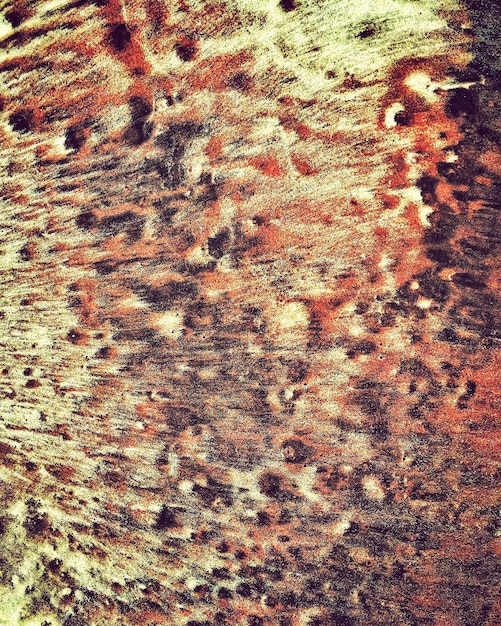Comic Book Preservation: Expert Tips to Prevent Yellowing & Foxing

Comic book preservation hinges on preventing yellowing and foxing, which involves controlling environmental factors, using proper storage materials, and handling comics with care to maintain their value and condition.
Want to keep your prized comic book collection in pristine condition for years to come? Understanding the causes of yellowing and foxing is the first step in comic book preservation: how to prevent yellowing and foxing is the key to maintaining their value and appeal.
Understanding the Enemies: Yellowing and Foxing
Yellowing and foxing are two of the most common issues that plague comic book collectors. Understanding what causes these problems is essential for taking steps to prevent them.
Let’s delve into the science behind these deteriorations and how they impact your collection.
What Causes Yellowing?
Yellowing in comic books is primarily caused by the oxidation of the paper. This process is accelerated by exposure to light, heat, and humidity.
The lignin in wood-pulp paper breaks down, leading to the discoloration that we recognize as yellowing.
What is Foxing?
Foxing manifests as small, reddish-brown spots on the paper. It’s typically caused by mold or other microorganisms that thrive in humid environments.
These spots can spread over time, degrading the paper and affecting the comic’s aesthetic and monetary value.

Preventing yellowing and foxing involves controlling these environmental factors and using appropriate storage solutions:
- Control Humidity: Keep comics in a dry environment with a relative humidity between 45% and 55%.
- Limit Light Exposure: Store comics away from direct sunlight and UV light.
- Maintain Consistent Temperature: Avoid extreme temperature fluctuations, which can accelerate degradation.
Understanding the causes of yellowing and foxing is the foundation for effective comic book preservation. By controlling the environmental factors and choosing proper storage materials, you can protect your investment.
Choosing the Right Storage Materials
Selecting the right storage materials is crucial for safeguarding your comic books against environmental damage. Acid-free backing boards and mylar bags are the go-to choices for serious collectors.
Let’s explore why these materials are so effective and how they contribute to long-term preservation.
Acid-Free Backing Boards
Acid-free backing boards provide support and rigidity to comic books, preventing bending and creasing. More importantly, they prevent acid migration from the comic book to the storage materials.
These boards are made to neutralize acids, which can damage the paper over time.
Mylar Bags
Mylar bags are made from an inert polyester film that provides a barrier against moisture, pollutants, and UV light. Unlike cheaper polyethylene bags, mylar does not degrade or emit harmful chemicals.
They offer superior protection and are essential for preserving comics for decades.
Aside from these materials, here are essential storing practices:
- Handle with Care: Always wash your hands before handling comic books to avoid transferring oils and dirt.
- Avoid Overcrowding: Store comics upright, with enough space to prevent bending or warping.
- Regular Inspection: Periodically check your collection for signs of damage, such as discoloration, mold, or pests.

Selecting the right storage materials, such as acid-free backing boards and mylar bags, is a cornerstone of comic book preservation. Combined with careful handling and regular inspection, these practices ensure that your collection remains in top condition.
Controlling the Environment: Temperature, Humidity, and Light
The environment in which you store your comic books plays a pivotal role in their longevity. Fluctuations in temperature, humidity, and light exposure can accelerate degradation.
Creating a stable and controlled storage environment is essential for preventing yellowing and foxing.
Maintaining Consistent Temperature
Extreme changes in temperature can cause the paper to expand and contract, leading to structural damage. It’s best to store comic books in a cool, stable environment.
A temperature between 65°F and 70°F (18°C and 21°C) is ideal.
Regulating Humidity Levels
High humidity promotes the growth of mold and mildew, contributing to foxing. Low humidity can cause the paper to become brittle and crack.
Maintaining a relative humidity between 45% and 55% is crucial.
Protecting Against Light Exposure
UV light from sunlight and fluorescent bulbs can cause fading and yellowing. Store your comic books in a dark location, away from direct light sources.
If you must display comics, use UV-filtering acrylic cases or window films.
Here’s how you can make this happen:
- Use a Dehumidifier: If you live in a humid climate, use a dehumidifier to maintain the appropriate humidity level.
- Install UV-Filtering Films: Apply UV-filtering films to windows to block harmful rays.
- Monitor Conditions Regularly: Use a hygrometer and thermometer to monitor temperature and humidity levels.
Controlling the environment is a fundamental aspect of comic book preservation. By maintaining stable temperature and humidity levels and minimizing light exposure, you can significantly extend the lifespan of your collection.
Safe Handling Practices for Comic Books
Proper handling is essential to prevent physical damage and contamination. Always wash your hands before touching your comics, and avoid eating or drinking while handling them.
Using clean, lint-free gloves can also help minimize the transfer of oils and dirt.
How to Properly Handle Comic Books
Support the comic book properly to avoid bending or creasing the spine. Handle with care and use clean, dry hands.
Avoid touching the cover excessively, as this can transfer oils and dirt.
Avoiding Common Mistakes
Never use tape or adhesives on comic books, as these can cause permanent damage. Do not stack comics without backing boards, as this can lead to warping.
Avoid storing comics in areas where they may be exposed to pests or rodents.
Implementing these simple guidelines can go a long way in preserving your comic book collection:
- Wear Gloves: Use clean, lint-free gloves to minimize the transfer of oils and dirt.
- Use a Clean, Flat Surface: Always handle comic books on a clean, flat surface to avoid bending or creasing.
- Avoid Eating and Drinking: Refrain from eating or drinking while handling comics to prevent spills and contamination.
Safe handling practices are a simple yet vital component of comic book preservation. By following these guidelines, you can minimize the risk of physical damage and contamination, ensuring that your collection remains in excellent condition.
Restoration vs. Preservation: What’s the Difference?
Understanding the difference between restoration and preservation is essential for making informed decisions about your comic book collection. Preservation aims to maintain the current condition of a comic book, while restoration involves repairing damage to bring it back to a better state.
Let’s explore the nuances of each approach and how they apply to comic book care.
Preservation Techniques
Preservation includes practices such as using acid-free storage materials, controlling the environment, and handling comics with care. The goal is to prevent further degradation.
It is a proactive approach focused on maintaining the status quo.
Restoration Techniques
Restoration involves techniques such as cleaning, de-acidification, and repairing tears or missing pieces. The objective is to improve the comic’s appearance and structural integrity.
Restoration can be controversial, as it may affect the comic’s historical value.
Here are the key differences between restoration and preservation:
- Goal: Preservation aims to maintain the comic’s current condition, while restoration aims to improve it.
- Approach: Preservation is proactive and preventative, while restoration is reactive and corrective.
- Impact: Preservation typically does not alter the comic’s original state, while restoration can change its appearance and value.
Restoration can enhance a comic book’s appearance, but it may impact its market value and historical significance. Always consider the long-term implications before opting for restoration, and prioritize preservation to maintain the integrity of your collection.
Digital Preservation: Scanning and Archiving
In addition to physical preservation, digital preservation offers a way to safeguard your comic book collection against loss or damage. Scanning and archiving your comics allows you to create digital copies that can be accessed and enjoyed without handling the original.
This method also provides a backup in case of unforeseen events.
Benefits of Digital Preservation
Digital preservation ensures that your comic books can be enjoyed and shared indefinitely. It also protects the physical copies from wear and tear.
Additionally, digital archives can be easily organized and searched.
How to Scan Your Comics
Use a high-resolution scanner to capture the details of each page. Save the images in a lossless format such as TIFF to preserve image quality.
Consider using specialized software to enhance the scanned images, such as color correction and dust removal.
Keep these things in mind when digitally preserving your collection:
- Choose the Right Scanner: A flatbed scanner with high DPI (dots per inch) resolution is ideal for capturing detailed images.
- Use Lossless Formats: Save scanned images in lossless formats like TIFF or PNG to avoid quality loss during compression.
- Organize Your Digital Archive: Create a clear and consistent folder structure to easily locate and manage your digital comic books.
Digital preservation is a valuable complement to physical preservation methods. By scanning and archiving your comic books, you can ensure that your collection remains accessible and protected for future generations.
| Key Point | Brief Description |
|---|---|
| 🌡️ Temperature Control | Maintain stable temperatures between 65°F and 70°F to prevent paper damage. |
| 💧 Humidity Regulation | Keep relative humidity between 45% and 55% to avoid mold and brittleness. |
| 🛡️ Acid-Free Materials | Use acid-free backing boards and mylar bags to prevent chemical damage. |
| ✨ Digital Archiving | Scan and archive your comics to preserve them digitally and protect physical copies. |
Frequently Asked Questions
▼
The best way to store comic books is using acid-free backing boards and mylar bags, stored upright in a cool, dry, and dark environment to prevent damage from environmental factors.
▼
It is a good practice to check your comics for damage at least once every six months. Look for signs of yellowing, foxing, mold, or physical wear to address issues promptly.
▼
Cleaning comic books should be approached with caution. For minor surface dirt, use a soft brush or cloth gently. Avoid using liquids or chemicals, which can cause more harm.
▼
Polyethylene bags are not as effective as mylar bags. Mylar offers better protection against moisture, pollutants, and UV light, while polyethylene can degrade over time and emit harmful chemicals.
▼
Yes, digitally archiving your comic book collection provides a backup against physical damage. It also allows you to enjoy your collection without handling the originals, preserving their condition.
Conclusion
Preserving your comic book collection requires a proactive approach that combines proper storage, careful handling, and environmental control. By implementing these strategies, you can protect your valuable investments and enjoy your comics for many years to come.





